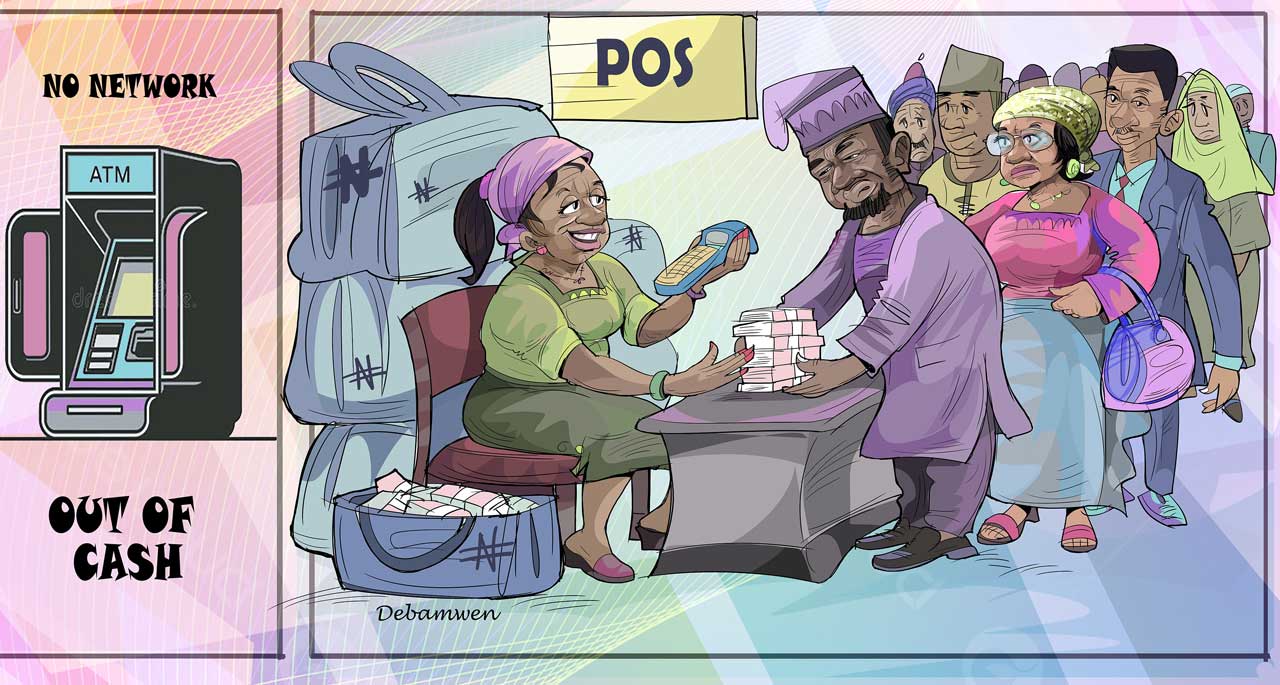
• Insecurity poses risk to off-site ATM deployment
• Digital-first banks may consider new partnerships to keep youth markets
To relieve banks of the burden of operating automated teller machines (ATMs) and handling cash, the Central Bank of Nigeria (CBN) has imposed new withdrawal charges on consumers who use this option.
The review may have stretched the journey to commoditise the naira by miles and increased the cost of banking. For some Nigerians, it also raises questions about the CBN’s commitment to financial inclusion.
With the new policy released yesterday, N20,000 cash withdrawal from a non-issuer institution is charged N100.
But off-site withdrawals (ATM located in non-bank premises) of N20,000, will henceforth be charged N100 plus a surcharge not exceeding N500 when the new price regime comes into effect on March 1, the Central Bank said in a circular dated February 10.
On-site and off-site card services on non-issuer banks are currently charged N35 per withdrawal after the first free monthly offers.
Supposing the current fee charges by agent banks would remain constant, cash calls would ultimately flow to the operators, especially in communities where banks are scanty.
But The Guardian’s quick market survey shows the operators, who are also serviced by ATMs, offer more convenience and faster service, could charge higher than the upper band of ATM fee even as the policy may introduce another level of competition between the two strands of cash ‘dispensers’.
First, most of the agent banks use cards issued by Opay, MoniePoint, Palmpay and sundry digital-first banks, who do not consider brick-and-mortar operations, including ATM points, as profitable business strategies.
Most of the operators, by business models, run on an asset-light model – a reason they have traded physical presence for heavy digital infrastructure investment.
In the near term, their card-carrying customers would continue to rely on ATM facilities deployed by conventional banks for withdrawals – a possibility that suggests usage of the cards would be less attractive.
This also means agent banks would need to charge higher to cover the high cost of using the cards issued by shadow banks.
But a source said the newcomers would need to weigh the consequences of their non-investment in ATMs for their operations in the coming weeks. A possible outcome of the review could be an aggressive deployment of ATMs, which the new policy has elevated to full commercial activities.
In youth-dominated communities such as university campuses, Opay, PalmPay and other fintech banks have become part of the pop culture owing to the ease of procurement, which is 100 per cent digital.
A source said the issuers would need to quickly roll out business operation strategies to sustain the important market base. The strategies, The Guardian learnt could include any partnership with existing infrastructure that would help the young people evade paying the upper-band charges.


Be the first to comment